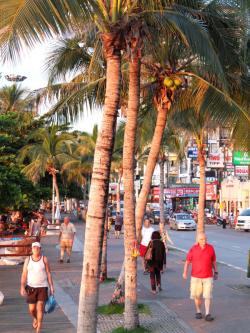
The Designated Areas for Sustainable Tourism Administration (Dasta) is aiming to strengthen local tourism in Pattaya and improve the city's image among foreign tourists.

Foreign tourists stroll along Beach Road in Pattaya. SAROTE MEKSOPHAWANNAKUL
Dasta deputy director-general Taweebhong Wichaidit said a plan is in progress to change Pattaya's image from a "sin city" to a family entertainment destination.
Officials are promoting tourism areas such as Baan Chark Ngaew, Takien Tia, Nong Prue, Nong Pla Lai, Huay Yai, Khao Chee Jan and Khao Mai Kaew, all of which offer scenic views of nature.
Tourists in these areas can experience the local lifestyle away from Pattaya's nightlife and beaches in places such as Baan Chark Ngaew, a 100-year-old Chinese community.
Mr Taweebhong said the effort to change Pattaya's image may be difficult, but Dasta will work to promote alternative tourism for Thai and international travellers who want to see authentic local culture and nature.
"We aim to strengthen local communities to generate more tourist revenue within two years, and then they will be stronger in using their assets to present themselves as new tourist attractions," he said.
Dasta is trying to create local tourist attractions and activities and revitalise nature sites to attract both local and foreign travellers.
Baan Chark Ngaew represents Chinese vintage life, while Nong Prue shows a religious and cultural dimension with a mix of Christian, Buddhist and Muslim influences.
Khao Chee Jan is home to 11 royal projects conforming with the late King Bhumibol Adulyadej's sufficiency economy philosophy.
"I strongly believe that Chon Buri's designated areas will offer more dimensions to Thais and international travellers in the future," Mr Taweebhong said.
Dasta always focuses on designated areas to help distribute income to local communities and reduce poverty.
It will let the Tourism Authority of Thailand present the new tourist attractions.
Dasta has worked more than five years to push community-based tourism and aims to distribute tourism revenue to 2,500 districts nationwide in 2017, up from 1,500 districts last year.